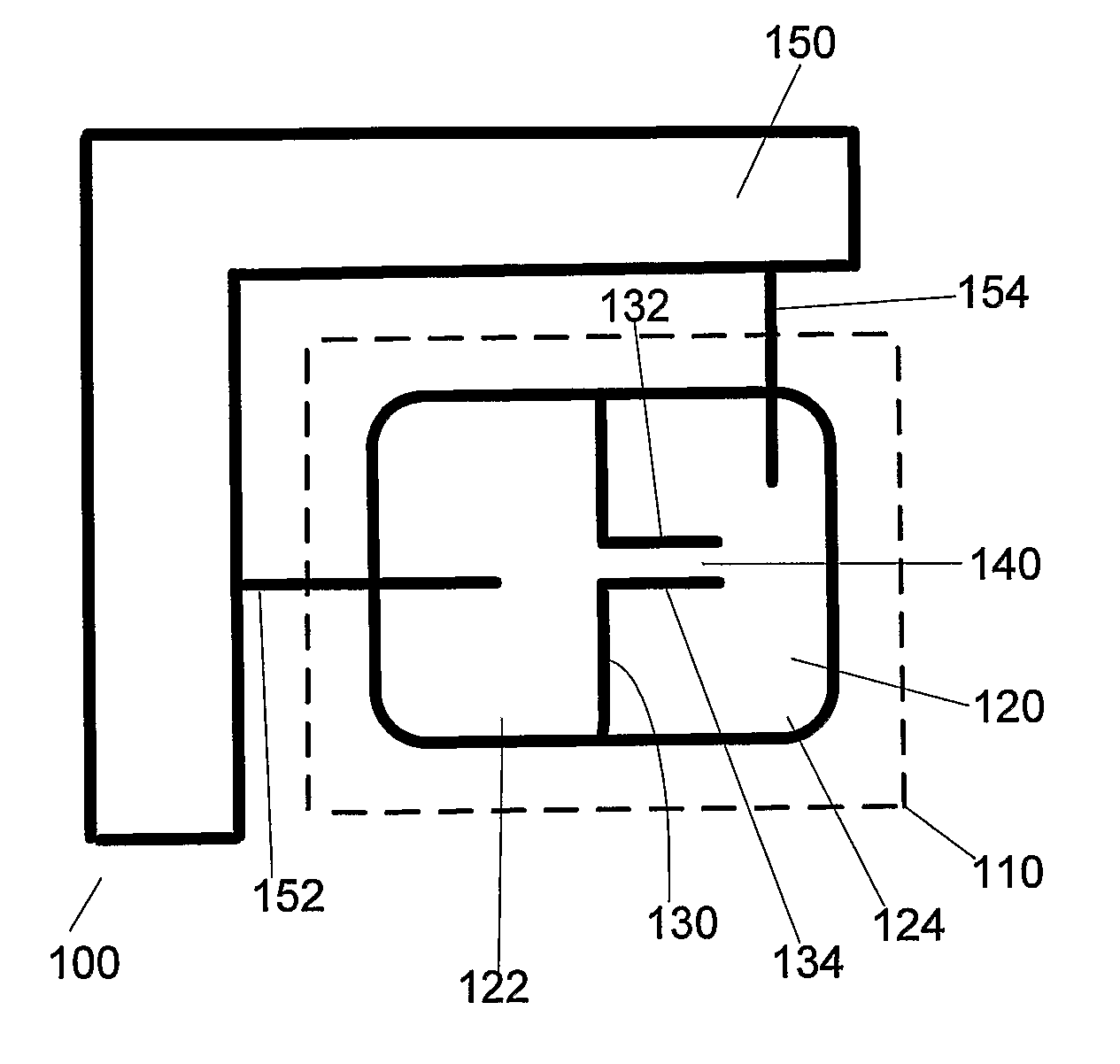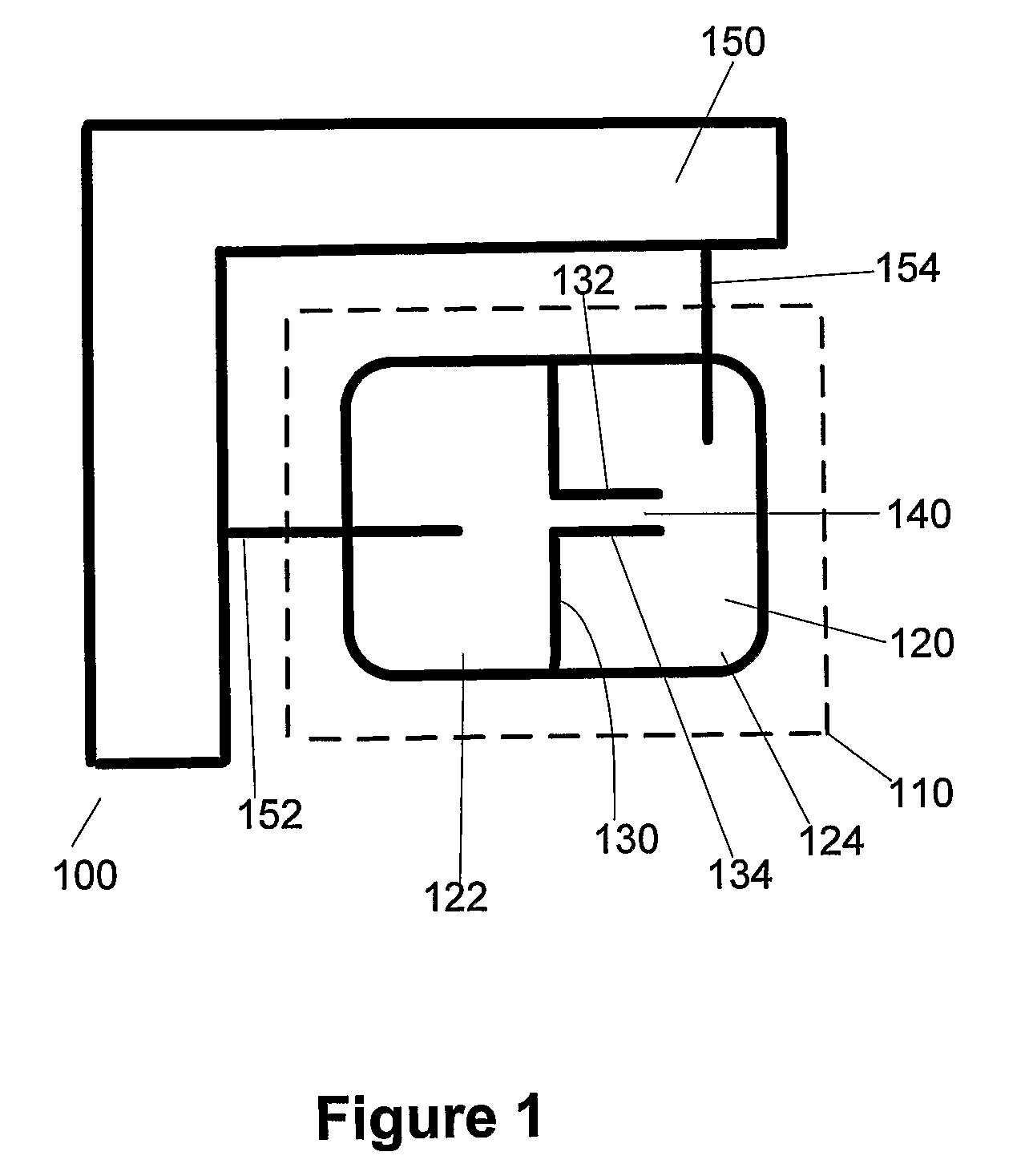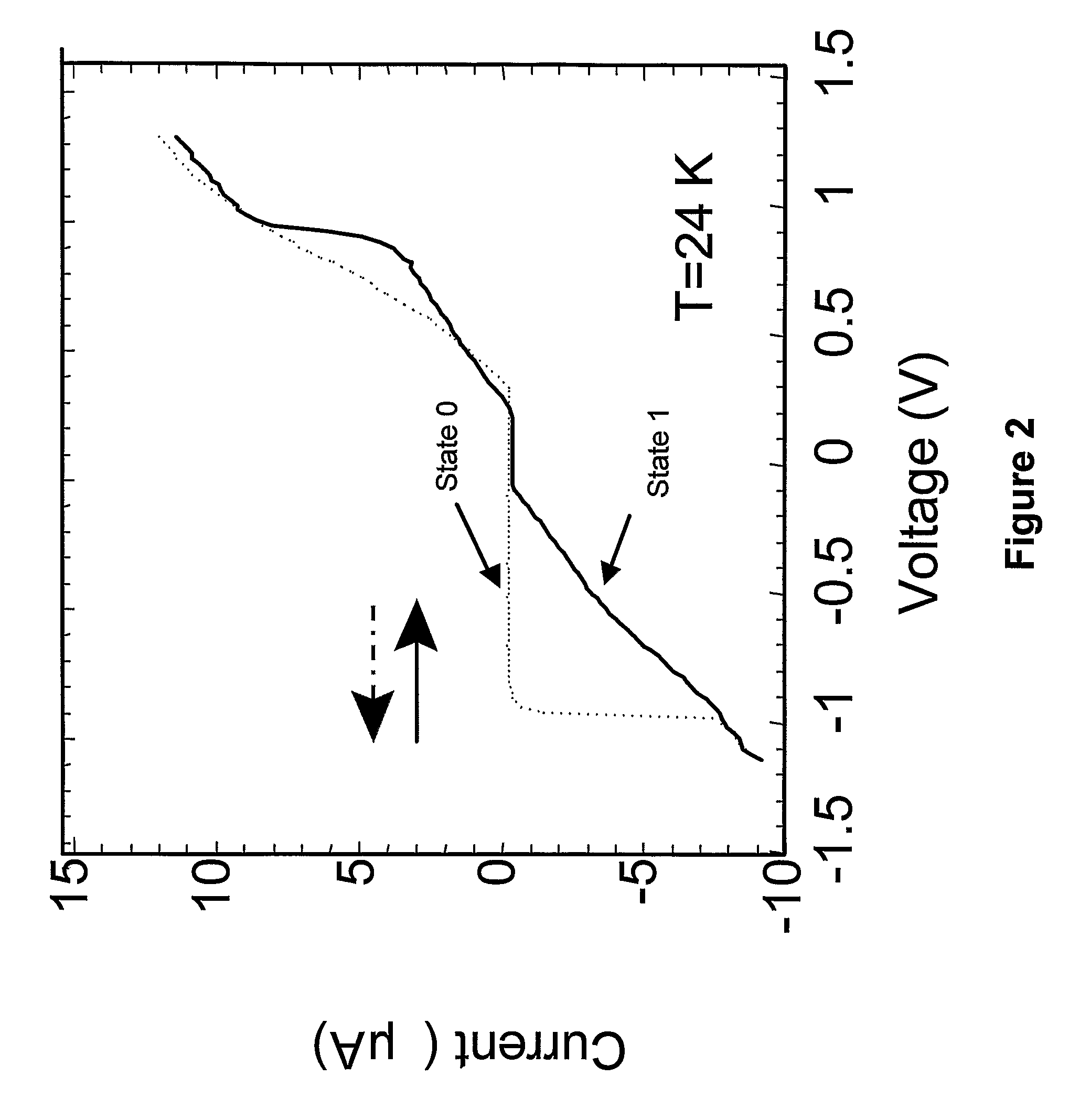Memory device
a memory device and memory technology, applied in the field of memory devices, can solve the problems of large increase in the cost of fabrication equipment used to manufacture such miniaturised devices, physical phenomena that can have undesirable effects upon the operation of miniaturised conventional semiconductor devices, and the problem of reducing the efficiency of the miniaturisation of such steps, so as to achieve the effect of simple manufacturing, simple technique and memory uni
- Summary
- Abstract
- Description
- Claims
- Application Information
AI Technical Summary
Benefits of technology
Problems solved by technology
Method used
Image
Examples
Embodiment Construction
[0036]FIG. 1 shows a nanometre-scale memory device 100 in accordance with an embodiment of the present invention. The device 100 comprises a memory unit 110 comprising a substrate 120 supporting mobile charge carriers (e.g. electrons or holes). Insulative features 130, 132, 134 are formed on the substrate surface to define first and second substrate areas 122, 124 on either side of the insulative features 130, 132, 134. The insulative features 132, 134 define a channel 140 connecting the first substrate area 122 to the second substrate area 124. The elongate channel 140 provides a charge carrier flow path from the first area to the second area. The insulative features extend to the edges of the device surface.
[0037]The elongate channel 140 is dimensioned such that the parameters of the charge carrier flow path are dependent on the potential difference between the first and second areas 122, 124. A first electrode 152 is coupled to the first area 122 for providing a voltage to that a...
PUM
| Property | Measurement | Unit |
|---|---|---|
| distance | aaaaa | aaaaa |
| length | aaaaa | aaaaa |
| threshold voltage | aaaaa | aaaaa |
Abstract
Description
Claims
Application Information
 Login to View More
Login to View More - R&D
- Intellectual Property
- Life Sciences
- Materials
- Tech Scout
- Unparalleled Data Quality
- Higher Quality Content
- 60% Fewer Hallucinations
Browse by: Latest US Patents, China's latest patents, Technical Efficacy Thesaurus, Application Domain, Technology Topic, Popular Technical Reports.
© 2025 PatSnap. All rights reserved.Legal|Privacy policy|Modern Slavery Act Transparency Statement|Sitemap|About US| Contact US: help@patsnap.com



